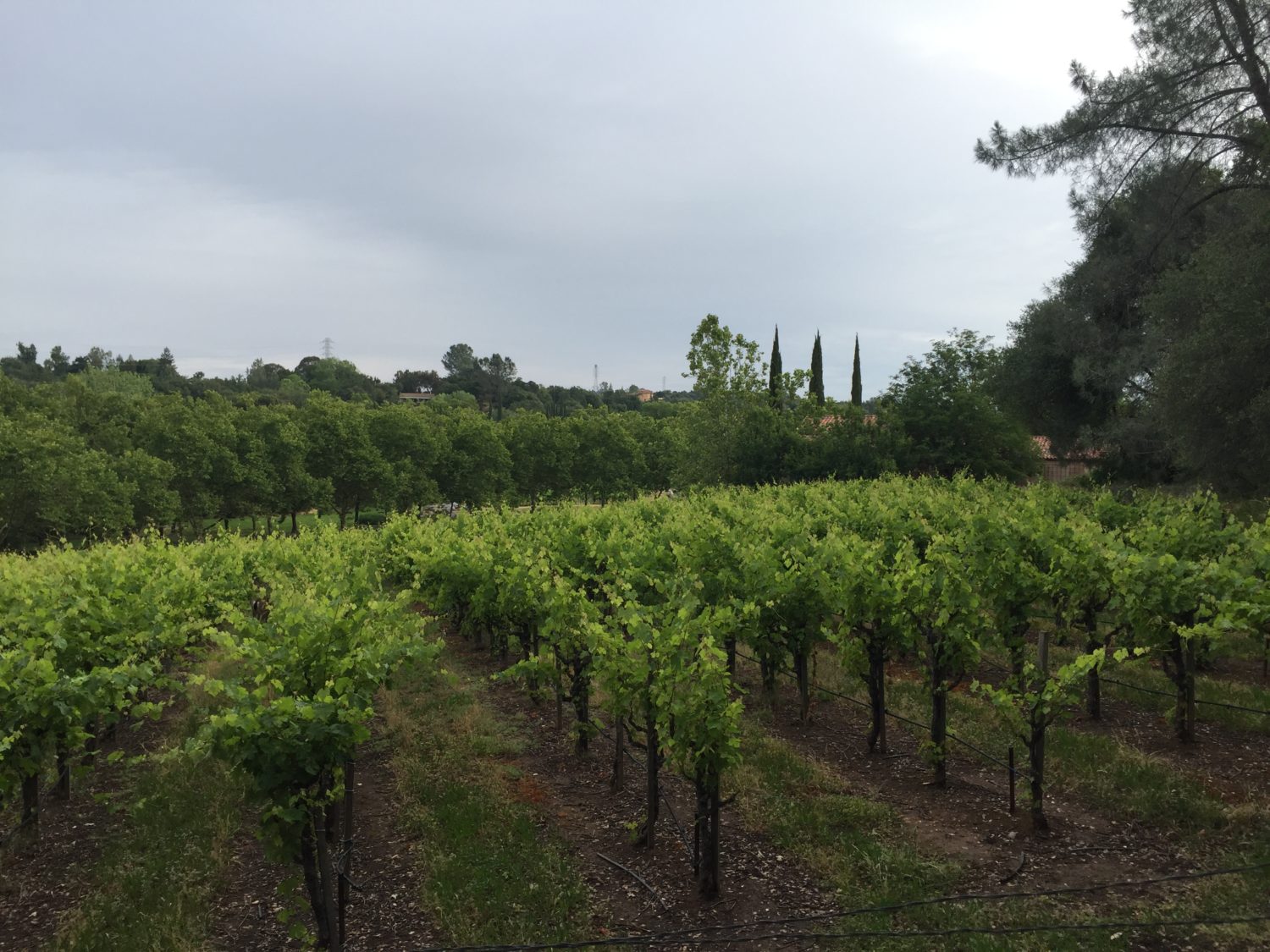Ah, Spring is here and we’re barreling towards summer, and that means the vineyards are a busy place working through the three “S”es of Spring, namely: Suckering, Shoot thinning, and Spraying.
Suckering is where you go through and remove undesirable shoots, especially those emerging from the root stock and trunk. This is most easily done shortly after bud break, when the shoots are still young, tender and green, but if you do it too early you’ll and up having to do it multiple times. When the shoots are green you can go through and remove them easily by hand. If you let them go too long, they harden and then you need to use clippers to remove them and it can take considerably longer. The other problem is that the longer you wait to sucker, the more dense and tangled with the canopy they can become especially in head pruned or vertical cordon systems.
Shoot thinning is a canopy management practice and method of adjusting the crop load and leaf to crop ratio. It can help improve light penetration and air movement through the canopy. Basically you are removing shoots from the base of spurs, multiple shoots from the same node, shoots growing from non-spur positions or originating from the head or trunk (unless those are needed to replace a lost cordon or spur. You really want to get to shoot thinning early enough that you aren’t dealing with shoots tangled with or with tendrils wrapped around the fruit bearing shoots you want to keep, otherwise the level of effort and care increases dramatically as you work to avoid damaging the shoots you plan to keep.
Spraying. Spring time means lots of spraying, particularly to prevent mildew. Powdery mildew caused by the fungus Uncinula nectar, is a particular problem in our area. The Cab Franc and Petite Sirah are particularly susceptible to this and it’s paramount to maintain a strong mildew control program. This starts with application of fungicide early in the season from just before bloom through fruit set, and should continue through veraison. You want your program to focus on preventative measures, rather than reactive, since it’s much harder to deal with mildew once you have an infection. Uncontrolled powdery mildew can wipe out your entire crop and can even impact future vine growth. It can also lead to increased Botrytis bunch rot. Spring rains are the biggest obstacle. Not only do spring rains wash away the fungicide, the moisture they leave behind when combined with warming temperatures, can create the ideal environment for fungal growth. It’s important to have increased spraying cycles and fungicide rates when the humidity increases and soon after the rains.
So the vineyard crew has been busy with all three “S”es of late. This spring is proving to be especially busy thanks to a cooler, milder spring with sporadic rains. Optimum temperatures for photosynthesis and plant growth are 68-86 degrees. With the fertile soil and our vibrate vines, the mild weather and periodic rains have kept the crew hoping from suckering and shoot thinning, to spraying and back again. By the time one pass of sucker and shoot thinning are done (interrupted by period spraying), the vines are ready to be suckered and shoot thinned again. The weeds love this weather too, so they’ve got to mow, Oh but wait, it just rained again…

Leave a Reply
You must be logged in to post a comment.